[Editor’s Note: Mad Scientist Laboratory is pleased to present our next edition of “The Queue” – a monthly post listing the most compelling articles, books, podcasts, videos, and/or movies that the U.S. Army’s Mad Scientist Initiative has come across during the previous month. In this anthology, we address how each of these works either informs or challenges our understanding of the Future Operational Environment (OE). We hope that you will add “The Queue” to your essential reading, listening, or watching each month!]
1. How Satellites the Size of a Grilled Cheese Sandwich Could Change the World, by Aaron Pressman, Fortune (via Yahoo! Finance), 24 January 2019.

Space is rapidly democratizing and the death of tactical and operational surprise might be the casualty. Sara Spangelo and her startup, Swarm Technologies, is on a quest to deliver global communications at the lowest possible cost. This is a shared objective with companies like Elon Musk’s Starlink, but his solution includes thousands of satellites requiring many successful rocket launches. Swarm Technologies takes the decrease in launch costs due to commercialization and the miniaturization of satellites to the max. Swarm Technologies satellites will be the size of a grilled cheese sandwich and will harness the currents coursing through space to maneuver. This should reduce the required cost and time to create a worldwide network of connectivity for texting and collecting Internet of Things (IoT) data to approximately 25 million dollars and eighteen months.
The work at Starlink and Swarm Technologies only represents a small part of a new space race led by companies rather than the governments that built and manage much of space capability today. In the recent Mad Sci blog post “War Laid Bare,” Matthew Ader described this explosion and how access to global communications and sensing might tip the scales of warfare in favor of the finder, providing an overwhelming advantage over competitors that require stealth or need to hide their signatures to be effective in 21st Century warfare.
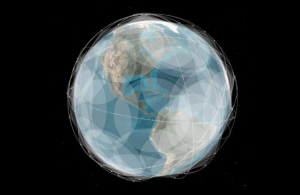
The impact of this level of global transparency not only weighs on governments and their militaries, but businesses will find it more difficult to hide from competitors and regulators. Cade Metz writes in the New York Times “Businesses Will Not Be Able to Hide: Spy Satellites May Give Edge from Above” about the impact this will have on global competition. It is a brave new world unless you have something to hide!
2. New Rules Takes the Guesswork out of Human Gene Editing, by Kristin Houser, Futurism, 14 December 2018.
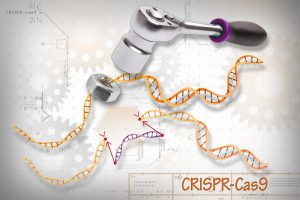 Subtitled, “This will fundamentally change the way we use CRISPR,” the subject article was published following Dr. He Jiankui’s announcement in November 2018 that he had successfully gene-edited two human babies. Clustered Regularly Interspaced Short Palindromic Repeats (CRISPR) associated protein 9, or CRISPR/Cas9, has become the “go to” tool for genomic engineering. When Dr. He announced that he had altered (as embryos) the twin girls Lulu and Nana’s genes in order to make them HIV-resistant, there was a global outcry from scientists, bio-ethicists, and politicians alike for a variety of reasons. One was the potential imprecision of the genetic editing performed, with the associated risk of unintended genomic damage leading to future health issues for the twins.
Subtitled, “This will fundamentally change the way we use CRISPR,” the subject article was published following Dr. He Jiankui’s announcement in November 2018 that he had successfully gene-edited two human babies. Clustered Regularly Interspaced Short Palindromic Repeats (CRISPR) associated protein 9, or CRISPR/Cas9, has become the “go to” tool for genomic engineering. When Dr. He announced that he had altered (as embryos) the twin girls Lulu and Nana’s genes in order to make them HIV-resistant, there was a global outcry from scientists, bio-ethicists, and politicians alike for a variety of reasons. One was the potential imprecision of the genetic editing performed, with the associated risk of unintended genomic damage leading to future health issues for the twins.
With the publication of “Target-Specific Precision of CRISPR-Mediated Genome Editing” in the scientific journal Molecular Cell by research scientists at The Francis Crick Institute in London, however, this particular concern appears to have been mitigated with a set of simple rules that determine the precision of CRISPR/Cas9 editing in human cells.
“The effects of CRISPR were thought to be unpredictable and seemingly random,” Crick researcher and group leader Paola Scaffidi said in their news release, “but by analysing hundreds of edits we were shocked to find that there are actually simple, predictable patterns behind it all.”
Per Scaffidi, “Until now, editing genes with CRISPR has involved a lot of guesswork, frustration and trial and error…. The effects of CRISPR were thought to be unpredictable and seemingly random, but by analysing hundreds of edits we were shocked to find that there are actually simple, predictable patterns behind it all. This will fundamentally change the way we use CRISPR, allowing us to study gene function with greater precision and significantly accelerating our science.”
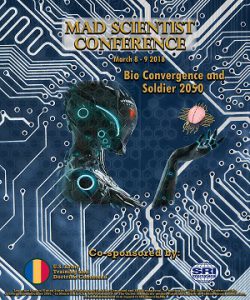 As predicted by Stanford’s bio-ethicist Hank Greely at last March’s Mad Scientist Bio Convergence and Soldier 2050 Conference in Menlo Park, CA, “killer apps” like healthier babies will help overcome the initial resistance to human enhancement via genetic engineering. The Crick Institute’s discovery, with its associated enhanced precision and reliability, may pave the way for market-based designer eugenics. Ramifications for the Future Operational Environment include further societal polarization between the privileged few that will have access to the genomic protocols providing such enhancements and the majority that do not (as in the 2013 film Elysium); the potential for unscrupulous regimes, non-state actors, and super-empowered individuals to breed and employ cadres of genetically enhanced thugs, “button men,” and super soldiers; and the relative policing / combat disadvantage experienced by those powers that outlaw such human genetic enhancements.
As predicted by Stanford’s bio-ethicist Hank Greely at last March’s Mad Scientist Bio Convergence and Soldier 2050 Conference in Menlo Park, CA, “killer apps” like healthier babies will help overcome the initial resistance to human enhancement via genetic engineering. The Crick Institute’s discovery, with its associated enhanced precision and reliability, may pave the way for market-based designer eugenics. Ramifications for the Future Operational Environment include further societal polarization between the privileged few that will have access to the genomic protocols providing such enhancements and the majority that do not (as in the 2013 film Elysium); the potential for unscrupulous regimes, non-state actors, and super-empowered individuals to breed and employ cadres of genetically enhanced thugs, “button men,” and super soldiers; and the relative policing / combat disadvantage experienced by those powers that outlaw such human genetic enhancements.
3. Radical Speaker Series: Countering Weaponized Information, SOFWERX and USSOCOM / J5 Donovan Group, 14 December 2018.
 SOFWERX, in collaboration with USSOCOM / J5 Donovan Group, hosted a Radical Speaker Series on weaponized information. Mass influence operations, deep fakes, and social media metrics have been used by state and non-state actors in attempts to influence everything from public sentiment on policy issues to election results. The type and extent of influence operations has laid bare policy and technology gaps. This represents an emerging new threat vector for global competition.
SOFWERX, in collaboration with USSOCOM / J5 Donovan Group, hosted a Radical Speaker Series on weaponized information. Mass influence operations, deep fakes, and social media metrics have been used by state and non-state actors in attempts to influence everything from public sentiment on policy issues to election results. The type and extent of influence operations has laid bare policy and technology gaps. This represents an emerging new threat vector for global competition.
As discussed in the TRADOC G-2’s The Operational Environment and the Changing Character of Future Warfare, Social Media and the Internet of Things has connected “all aspects of human engagement where cognition, ideas, and perceptions, are almost instantaneously available.” While this connectivity has been a global change agent, some are suggesting starting over and abandoning the internet as we know it in favor of alternative internet or “Alternet” solutions. LikeWar authors Singer and Brookings provide examples of how our adversaries are weaponizing Social Media to augment their operations in the physical domain. One example is the defeat ISIS and re-capture of Mosul, “… Who was involved in the fight, where they were located, and even how they achieved victory had been twisted and transformed. Indeed, if what was online could swing the course of a battle — or eliminate the need for battle entirely — what, exactly, could be considered ‘war’ at all?”
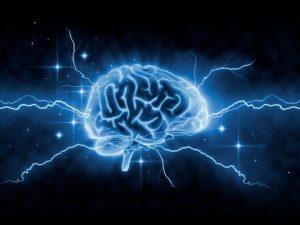 Taken to the next level in the battle for the brain, novel neuroweapons could grant adversaries (and perhaps the United States) the ability to disrupt, degrade, damage, kill, and even “hack” human brains to influence populations. The resulting confusion and panic could disrupt government and society, without mass casualties. These attacks against the human brain facilitate personalized warfare. Neuroweapons are “Weapons of Mass Disruption” that may characterize segments of warfare in the future. These capabilities come with a host of ethical and moral considerations — does affecting someone’s brain purposely, even temporarily, violate ethical codes, treaties, conventions, and international norms followed by the U.S. military? As posed by Singer and Brookings — “what, exactly, could be considered ‘war’ at all?”
Taken to the next level in the battle for the brain, novel neuroweapons could grant adversaries (and perhaps the United States) the ability to disrupt, degrade, damage, kill, and even “hack” human brains to influence populations. The resulting confusion and panic could disrupt government and society, without mass casualties. These attacks against the human brain facilitate personalized warfare. Neuroweapons are “Weapons of Mass Disruption” that may characterize segments of warfare in the future. These capabilities come with a host of ethical and moral considerations — does affecting someone’s brain purposely, even temporarily, violate ethical codes, treaties, conventions, and international norms followed by the U.S. military? As posed by Singer and Brookings — “what, exactly, could be considered ‘war’ at all?”
4. Nano, short film directed by Mike Manning, 2017.

This short film noir focuses on invasive technology and explores themes of liberty, control, and what citizens are willing to trade for safety and security. In a future America, technology has progressed to the point where embedded devices in humans are not only possible and popular, but the norm. These devices, known as Nano, can sync with one’s physiology, alter genomes, change hair and eye color, and, most importantly to law enforcement and government entities, control motor functions. Nano has resulted in a safer society, with tremendous reductions in gun violence. In the film, a new law has passed mandating that all citizens must be upgraded to Nano 2.0 – this controversial move means that the Government will now have access to everyone’s location, will be able to monitor them in real-time, and control their physiology. The Government could, were they so inclined, change someone’s hair color remotely, without permission or, perhaps, more frighteningly, induce indefinite paralysis.
Nano explores and, in some cases, answers the questions about future technologies and their potential impact on society. Nano illustrates how with many of the advantages and services we gain through new technologies, we sometimes have to give up things just as valuable. Technology no longer operates in a vacuum – meaning control over ourselves doesn’t exist. When we use a cellphone, when we access a website, when we, in Nano, change the color of our hair, our actions are being monitored, logged, and tracked by something. With cellphone use, we are willing to live with the fact that we give off a signature that could be traced by a number of agencies, including our service providers, as a net positive outweighing the associated negatives. But where does that line fall? How far would the average citizen go if they could have an embedded device installed that would heal minor wounds and lacerations? What becomes of privacy and what would we be willing to give up? Nano shows the negative consequences of this progression and the dystopian nature of technological slavery. It proposes questions of trust, both in the state and in individuals, and how blurred the lines can be, both in terms of freedoms and physical appearance.
5. “Artificial Intelligence and the Future of Humans,” by Janna Anderson, Lee Rainie, and Alex Luchsinger, The Pew Research Center, 10 December 2018 (reviewed by Ms. Marie Murphy).
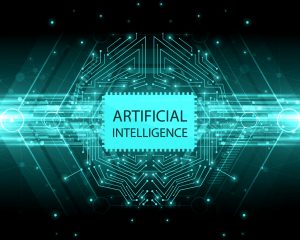
The Pew Research Center canvassed a host of technology innovators and business and policy leaders on whether artificial intelligence (AI) and related technology will enhance human capabilities and improve human life, or will it lessen human autonomy and agency to a detrimental level. A majority of the experts who responded to this query agreed that AI will better the lives of most people, but qualified this by noting significant negative outcomes will likely accompany the proliferation and integration of AI systems.
Most agree that AI will greatly benefit humanity and increase the quality of life for many, such as eliminating poverty and disease, while conveniently supplementing human intelligence helping to solve crucial problems. However, there are concerns that AI will conflict with and eventually overpower human autonomy, intelligence, decision-making, analysis, and many other uniquely “human” characteristics. Professionals in the field expressed concerns over the potential for data abuse and cybercrime, job loss, and becoming dependent on AI resulting in the loss of the ability to think independently.
Amy Webb, the founder of the Future Today Institute and professor of strategic foresight at New York University posits that the integration of AI will last for the next 50 years until every industry is reliant on AI systems, requiring workers to possess hybrid skills to compete for jobs that do not yet exist. Simon Briggs, professor of interdisciplinary arts at the University of Edinburgh, predicts that the potential negative outcomes of AI will be the result of a failure of humanity, and that “in 2030 AI will be in routine use to fight wars and kill people, far more effectively than humans can currently kill,” and, “we cannot expect our AI systems to be ethical on our behalf”.
As the U.S. Army continues to explore and experiment with how best to employ AI on the battlefield, there is the great challenge of ensuring that they are being used in the most effective and beneficial capacity, without reducing the efficiency and relevance of the humans working alongside the machines. Warfare will become more integrated with this technology, so monitoring the transition carefully is important for the successful application of AI to military strategy and operations to mitigate its potential negative effects.
6. “Automation Will Replace Production, Food, and Transportation Jobs First,” by James Dennin, INVERSE, 28 January 2019.
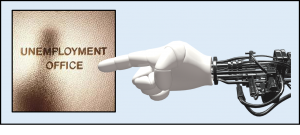 A newly released paper from the Brookings Institute indicated that the advent of autonomy and advanced automation will have unevenly distributed positive and negative effects on varying job and career sectors. According to the report, the three fields most vulnerable to reduction through automation will be production, food service, and transportation jobs. Additionally, certain geographic categories (especially rural, less populated areas) will suffer graver effects of this continuous push towards autonomy.
A newly released paper from the Brookings Institute indicated that the advent of autonomy and advanced automation will have unevenly distributed positive and negative effects on varying job and career sectors. According to the report, the three fields most vulnerable to reduction through automation will be production, food service, and transportation jobs. Additionally, certain geographic categories (especially rural, less populated areas) will suffer graver effects of this continuous push towards autonomy.
Though automation is expected to displace labor in 72% of businesses in 2019, the prospects of future workers is not all doom and gloom. As the report notes, automation in a general sense replaces tasks and not entire jobs, although AI and autonomy makes the specter of total job replacement more likely. Remaining tasks make humans even more critical though there may be less of them. While a wide variety of workers are at risk, young people face higher risks of labor displacement (16-24 year olds) partially due to a large amount of their jobs being in the aforementioned sectors.
 All of these automation impacts have significant implications for the Future Operational Environment, U.S. Army, and the Future of Warfare. An increase in automation and autonomy in production, food service, and transportation may mean that Soldiers can focus more exclusively on warfighting – moving, shooting, communicating – and in many cases will be complemented and made more lethal through automation. The dynamic nature of work due to these shifts could cause significant unrest requiring military attention in unexpected places. Additionally, the labor displacement of so much youth could be both a boon and a hindrance to the Army. On one hand, there could be a glut of new recruits due to poor employment outlook in the private sector; contrariwise, many of the freshly available recruits may not inherently have the required skills or even aptitude for becoming Warfighters.
All of these automation impacts have significant implications for the Future Operational Environment, U.S. Army, and the Future of Warfare. An increase in automation and autonomy in production, food service, and transportation may mean that Soldiers can focus more exclusively on warfighting – moving, shooting, communicating – and in many cases will be complemented and made more lethal through automation. The dynamic nature of work due to these shifts could cause significant unrest requiring military attention in unexpected places. Additionally, the labor displacement of so much youth could be both a boon and a hindrance to the Army. On one hand, there could be a glut of new recruits due to poor employment outlook in the private sector; contrariwise, many of the freshly available recruits may not inherently have the required skills or even aptitude for becoming Warfighters.
If you read, watch, or listen to something this month that you think has the potential to inform or challenge our understanding of the Future OE, please forward it (along with a brief description of why its potential ramifications are noteworthy to the greater Mad Scientist Community of Action) to our attention at: usarmy.jble.tradoc.mbx.army-mad-scientist@mail.mil — we may select it for inclusion in our next edition of “The Queue”!



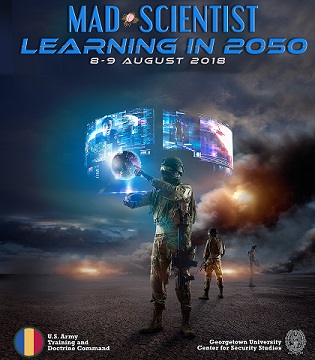 [Editor’s Note: At the Mad Scientist Learning in 2050 Conference with Georgetown University’s Center for Security Studies in Washington, DC, Leading scientists, innovators, and scholars gathered to discuss how humans will receive, process, and integrate information in the future. The convergence of technology, the speed of change, the generational differences of new Recruits, and the uncertainty of the Future Operational Environment will dramatically alter the way Soldiers and Leaders learn in 2050. One clear signal generated from this conference is that learning in the future will be personalized, continuous, and accelerated.]
[Editor’s Note: At the Mad Scientist Learning in 2050 Conference with Georgetown University’s Center for Security Studies in Washington, DC, Leading scientists, innovators, and scholars gathered to discuss how humans will receive, process, and integrate information in the future. The convergence of technology, the speed of change, the generational differences of new Recruits, and the uncertainty of the Future Operational Environment will dramatically alter the way Soldiers and Leaders learn in 2050. One clear signal generated from this conference is that learning in the future will be personalized, continuous, and accelerated.] The world is becoming increasingly personalized, and individual choice and preference drives much of daily life, from commerce, to transportation, to entertainment. For example, your Amazon account today can keep your payment information on file (one click away), suggest new products based on your purchase history, and allow you to shop from anywhere and ship to any place, all while tracking your purchase every step of the way, including providing photographic proof of delivery. Online retailers, personal transportation services, and streaming content providers track and maintain an unprecedented amount of specific individual information to deliver a detailed and personalized experience for the consumer.
The world is becoming increasingly personalized, and individual choice and preference drives much of daily life, from commerce, to transportation, to entertainment. For example, your Amazon account today can keep your payment information on file (one click away), suggest new products based on your purchase history, and allow you to shop from anywhere and ship to any place, all while tracking your purchase every step of the way, including providing photographic proof of delivery. Online retailers, personal transportation services, and streaming content providers track and maintain an unprecedented amount of specific individual information to deliver a detailed and personalized experience for the consumer.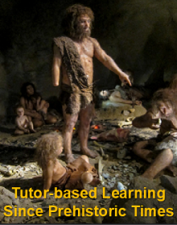 An important facet of personalized learning is personal attention to the learner. Tutors have been used in education for 60,000 years.
An important facet of personalized learning is personal attention to the learner. Tutors have been used in education for 60,000 years.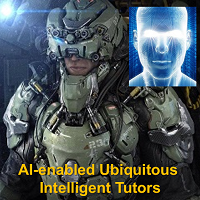 Research indicates that students who have access to tutors as opposed to exclusive classroom instruction were more effective learners as seen in the chart below. In other words, the average tutored student performed better than 98 percent of the students in the traditional classroom.
Research indicates that students who have access to tutors as opposed to exclusive classroom instruction were more effective learners as seen in the chart below. In other words, the average tutored student performed better than 98 percent of the students in the traditional classroom.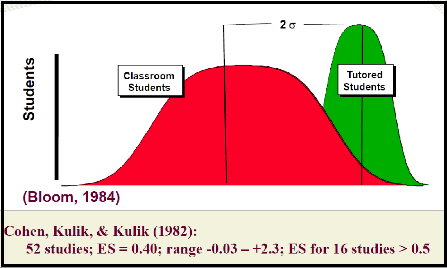
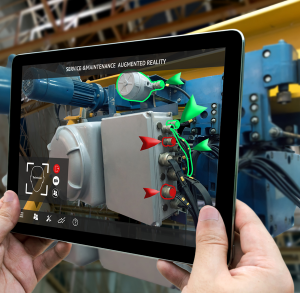 simulations, and video; and universal interfaces reduces or eliminates the necessity for physical co-location. This allows Soldiers to attend courses hosted virtually anywhere, participate in combined arms and Joint exercises globally, and experience a variety of austere and otherwise inaccessible environments through virtual and augmented reality.
simulations, and video; and universal interfaces reduces or eliminates the necessity for physical co-location. This allows Soldiers to attend courses hosted virtually anywhere, participate in combined arms and Joint exercises globally, and experience a variety of austere and otherwise inaccessible environments through virtual and augmented reality.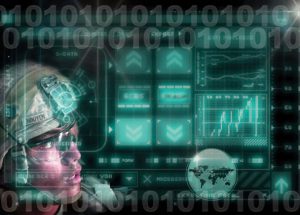 Learners must be given the chance to fail, and failure must be built in to the continuous learning process so that the learner not only arrives at the solution organically, but practices critical thinking and evaluation skills.
Learners must be given the chance to fail, and failure must be built in to the continuous learning process so that the learner not only arrives at the solution organically, but practices critical thinking and evaluation skills. The concept of accelerated learning, or using a compressed timeline and various approaches, methodologies, or technological means to maximize learning, opens up several questions: what kinds of technologies accelerate learning, and how does technology accelerate learning? Technologies useful for accelerated learning include the immersive reality spectrum – virtual reality/augmented reality (mixed reality) and haptic feedback – as well as wearables, neural stimulation, and brain mapping. These technologies and devices enable the individualization and personalization of learning. Individualization allows the learner to identify their strengths and weaknesses in learning, retaining, and applying information and provides a program structured to capitalize on his/her naturally favored learning style to maximize the amount and depth of information presented in the most time and cost-effective manner.
The concept of accelerated learning, or using a compressed timeline and various approaches, methodologies, or technological means to maximize learning, opens up several questions: what kinds of technologies accelerate learning, and how does technology accelerate learning? Technologies useful for accelerated learning include the immersive reality spectrum – virtual reality/augmented reality (mixed reality) and haptic feedback – as well as wearables, neural stimulation, and brain mapping. These technologies and devices enable the individualization and personalization of learning. Individualization allows the learner to identify their strengths and weaknesses in learning, retaining, and applying information and provides a program structured to capitalize on his/her naturally favored learning style to maximize the amount and depth of information presented in the most time and cost-effective manner.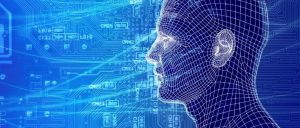 digital learning platform, providing real-time, individual feedback and suggesting areas for improvement or those in need of increased attention. Intelligent tutors and other technologies utilized in the accelerated learning process, such as augmented reality, can be readily adapted to a variety of situations conforming to the needs of a specific unit or mission.
digital learning platform, providing real-time, individual feedback and suggesting areas for improvement or those in need of increased attention. Intelligent tutors and other technologies utilized in the accelerated learning process, such as augmented reality, can be readily adapted to a variety of situations conforming to the needs of a specific unit or mission.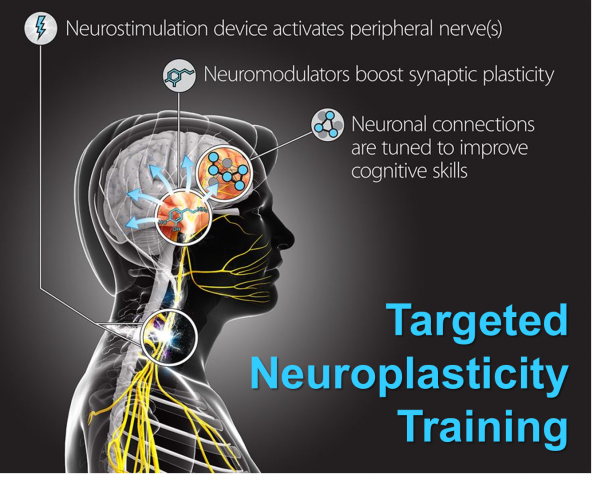 Accelerated learning does not guarantee positive outcomes. There is a high initial startup cost to producing mixed, augmented, and virtual reality training programs, and these programs require massive amounts of data and inputs for the most realistic product.
Accelerated learning does not guarantee positive outcomes. There is a high initial startup cost to producing mixed, augmented, and virtual reality training programs, and these programs require massive amounts of data and inputs for the most realistic product. An increased emphasis on continuous and accelerated learning could present the Army with an opportunity to have Soldiers that are lifelong learners capable of quickly picking up emerging required skills and knowledge. However, this focus would need to account for peak learner interest and long-term viability.
An increased emphasis on continuous and accelerated learning could present the Army with an opportunity to have Soldiers that are lifelong learners capable of quickly picking up emerging required skills and knowledge. However, this focus would need to account for peak learner interest and long-term viability.